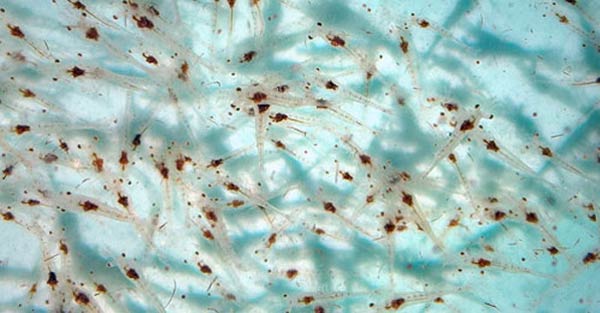Choose:
- Shrimp source needs to have clear origin.
- Post-larvae of black tiger prawn size P15 - P20.
- Post-larvae of whiteleg shrimp size P12 and upward.
Check the breed directly at the hatchery:
Direct observation: The length of shrimp post-larvae from the beginning of rostrum to end of tail ≥ 11 mm; shrimp with uniform size and size differences are no more than 15%. A completed outside structure: rostrum, straight antenna, fanned tail. Color: light gray, shiny shell. Quickly react when there are sudden impacts. Preying regularly; have full gut.
Microscopic observation with 100x or 150x magnification: Place shrimp post-larvae on a petri dish or coverslip with one drop of seawater. Observe rostrum, two antenna A1, A2, walking legs, abdomen leg, tail to find parasites. Observe the surface of the shell to look for lesions.
Use shocking method to find qualified shrimp:
Have about 20 shrimp post-larvae in a 300-ml beaker. Add fresh water to dramatically reduce salinity to 15‰, or add formalin to reach a concentration of 100 ‰, and then observe for 2 hours, if the survival rate is 95%, the breed is satisfied.
Send samples to breed testing laboratory for viral diseases such as white spot syndrome disease (WSSD), yellowhead disease (YHV), Hepatopancreatic parvovirus disease (HPV) in black tiger prawn, and Taura Syndrome in whiteleg shrimp.
Viet Linh © 2016

Photo: Internet